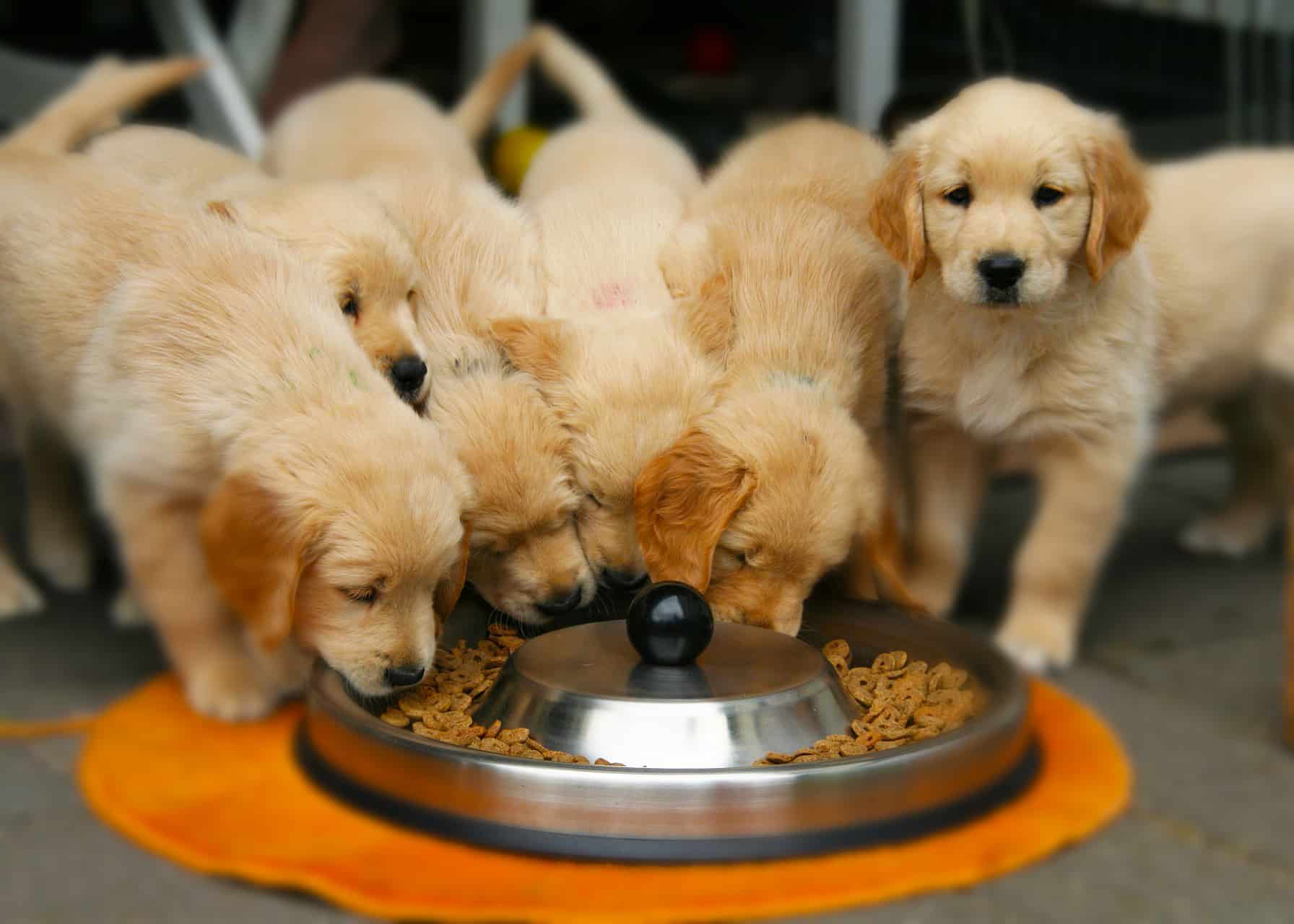This Is Why Your Goldendoodle Is Always Hungry
How can this dog be hungry again? I just finished feeding my dog, handed over a bite of my sandwich, and now I’m being checked over for crumbs. My neighbors and relatives must think that I’m starving my poor baby because their dog bowls all get emptied when we come to visit. Is there a problem?
Your Goldendoodle is always hungry? More often than not, it’s a learned behavior. One of the disadvantages of the Goldendoodle’s intelligence is quickly figuring out how to wheedle extra treats and snacks out of mom or dad. Competitive eating is also another factor if your puppy is a rescue and acts like every meal is it’s last.
Table of Contents
Goldendoodles Ancestry
Let’s face it. Dogs are opportunistic eaters and will sometimes eat even when they are full. It’s perfectly normal and we’ve all seen the commercials that compare your dog’s ancestry to wolves in the wild. The survival instincts would tend toward eating as much as they can, whenever they can because the hard times are coming. The Golden Retriever lineage passed down to your Goldendoodle imprints them with the initiative “the quickest eater survives”.
Goldendoodle’s Metabolism
A Goldendoodle’s high energy burns through the calories at a higher rate. Gulping down the kibble may be the way your dog copes with the hunger. This is extremely unhealthy and can cause bloat (gastric dilatation-volvulus or GDV) due to air being swallowed along with the food. In this state, excessive air, food, and liquid can cause the stomach to expand and twist along the axis. Nothing can pass through to the intestines causing destruction to the organs and permanent internal damage.
Competitive Eating
This can be a learned behavior from puppyhood when your pet was raised with littermates. Eating quickly ensured that the siblings didn’t get all the food first. If there are other pets in the home, this behavior may be more pronounced.
Ruling Out Health Issues
Many dogs are simply chowhounds and eat whenever the opportunity arises, but a sudden increased appetite could be a sign of a physical problem. If your puppy suddenly develops an insatiable appetite it could be a sign of a health issue such as:
- Diabetes
- Cancers
- Cushing’s disease
- Stomach disorders resulting in poor absorption
There’s no clear-cut cause for why a dog might be obsessed with eating. It could stem from a psychological issue, such as stress or learned behavior, or a medical issue, such as not getting the right nutrients or an underlying health condition.
PetMD
Check with your veterinarian to rule out any physical issues. If it’s a learned issue there are some steps you can take to get it under control.
Unlearning This Behavior
Several methods can be used to slow down your Goldendoodles eating. One way is to divide the daily intake into several small meals. This works well with the dogs that are high energy and dealing with intermittent bouts of hunger.
The next method is making it difficult to get large mouthfuls of food by placing obstacles in the food bowl, like toys or blocks. Your dog needs to eat around these objects thus slowing the pace down. You can try placing a smaller bowl upside-down in the larger food bowl making the kibble follow a narrow ring around the inside.
Timed automatic feeders are available that can portion out the food over the course of the day. This works well for the owners that can’t always meet a regular schedule dividing the meal into equal amounts.
After the dog leaves the bowl, remove it, indicating that mealtime is over. This will help reinforce the idea that there is a set time to eat and then no more.
What Your Goldendoodle Wants vs. Needs
By now you know your dog will eat as much as you can give him, but it doesn’t mean you should. Your dog’s caloric intake should be discussed with your vet and adjusted for age, size, and activity.
This guide is just that…a guide. Your furry companion will likely fall into these estimates for daily caloric intake and the amounts can be adjusted to match his needs. By measuring how many calories in a cup your dog food brand has, you can count up the amounts to measure out.
| Dogs Weight | Less Active | Active | Puppy |
|---|---|---|---|
| 2 - 5 lb | 110-220 Cal | 150-280 Cal | 170-335 Cal |
| 5 - 10 lb | 225-335 Cal | 228-450 Cal | 335-560 Cal |
| 10 - 20 lb | 335-450 Cal | 450-560 Cal | 560-675 Cal |
| 20 - 30 lb | 450-675 Cal | 560-785 Cal | 675- 900 Cal |
| 30 - 50 lb | 675- 900 Cal | 785-1,015 Cal | 900-1,235 Cal |
| 50 - 70 lb | 900-1,125 Cal | 1,015-1,465 Cal | 1,235-1,690 Cal |
| 70 - 90 lb | 1,125-1,350 Cal | 1,465-1,575 Cal | 1,690-1,915 Cal |
| 90 - 110 lb | 1,350-1,575 Cal | 1,575-1,860 Cal | 1,915-2,365 Cal |
| 110 - 140 lb | 1,575-1,800 Cal | 1,860-2,140 Cal | 2,365-2,590 Cal |
In Conclusion
You are the pack leader to your puppy and are the one to look to for permission. It isn’t easy to resist the pleading puppy eyes because we want our family members to be happy. Being stern with your dog is probably tougher on you than on the dog, but the starving animal behavior will be soon replaced with a patient (well, more patient) attitude toward dinnertime.


